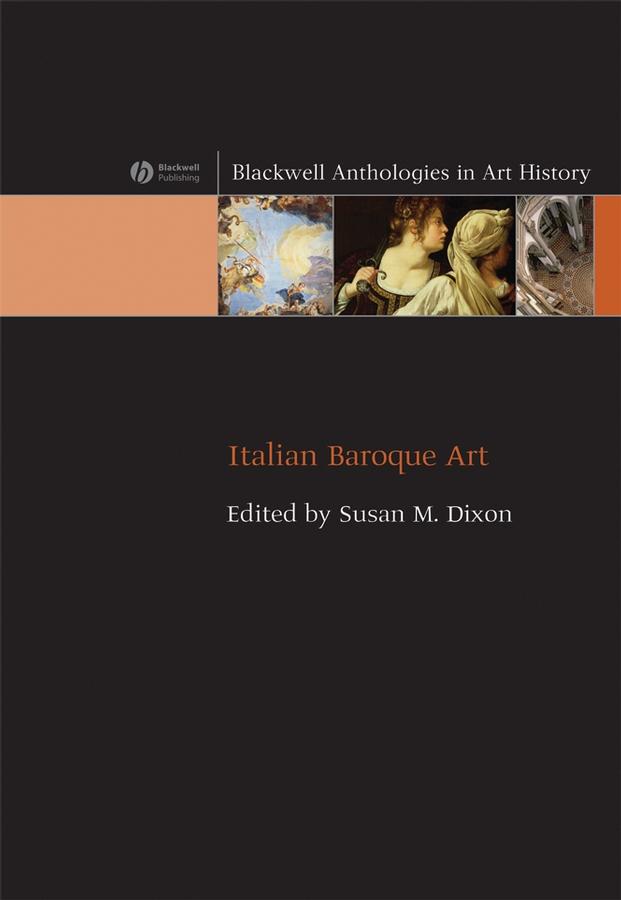Grandeur, intensity, passion, and motion - these are the defining characteristics of art created during the Baroque period in 17th and early 18th-century Italy. This rich and turbulent era heralds the Age of Enlightenment, and Italian art engages closely with key intellectual debates of the period, including the secular vs. the sacred; the role of the individual within a Catholic state; and the rise of cultural politics over military might.
This anthology presents classic and recent scholarship on Italian art from 1600-1750, highlighting key debates with which art historians continue to grapple. Its essays explore the concept of style or the visuality of art; the creation and utilization of art; artistic communication as projected and experienced; and artists' interactions with the ancient world and the new sciences. Italian Baroque Art is an innovative, intellectual, and instructional collection for students and lovers of 17th and 18th-century art.
Inhaltsverzeichnis
List of Illustrations ix
Preface xi
Acknowledgments xiv
Part I Appearances 1
1 What is Baroque? 7
Erwin Panofsky
2 The Idea of the Painter, the Sculptor and the Architect 22
Giovan Pietro Bellori
3 Fighting with Style 34
Philip Sohm
4 Bernini's Conception of the Visual Arts: "Un Bel Composto" 51
Irving Lavin
5 Ars Tornandi: Baroque Architecture and the Lathe 57
Joseph Connors
6 A Taste for Tiepolo 65
Svetlana Alpers and Michael Baxandall
Part II Artistic Practice, Production and Consumption 81
7 Practice in the Carracci Academy 87
Gail Feigenbaum
8 Artemisia in Her Father's House 98
Patrizia Cavazzini
9 Disegni, Bozzetti, Legnetti and Modelli in Roman Seicento Sculpture 113
Jennifer Montagu
10 Architects and Clods: The Emergence of Urban Planning in the Context of Palace Architecture in Seventeenth-Century Rome 120
Dorothy Metzger Habel
11 The Mechanics of Seventeenth-Century Patronage 133
Francis Haskell
12 Scrambling for Scudi: Notes on Painters' Earnings in Early Baroque Rome 151
Richard E. Spear
13 The Marketing of Pietro Testa's "Poetic Inventions" 169
Francesca Consagra
14 Inside the Palace: People and Furnishings 178
Patricia Waddy
Part III Meaning: Conceived and Received 195
15 A Comment on the Iconography of Pietro da Cortona's Barberini Ceiling 201
Walter Vitzthum
16 Seeing the Shroud: Guarini's Reliquary Chapel in Turin and the Ostension of a Dynastic Relic 209
John Beldon Scott
17 Myth and the New Science: Vico, Tiepolo, and the Language of the Optimates 230
Christopher Drew Armstrong
18 Problems of the Theme 251
Rudolf Wittkower
19 Devotion and Desire: The Reliquary Chapel of Maria Maddalena de'Pazzi 265
Karen-Edis Barzman
20 Pastoralism in the Roman Baroque Villa and in Claude Lorrain: Myths and Realities of the Roman Campagna 283
Mirka Beneš
Part IV Critique of the Past and the New Science 299
21 The Role of Classical Models in Bernini's and Poussin's Preparatory Work 305
Rudolf Wittkower
22 The Greek Style and the Prehistory of Neoclassicism 311
Charles Dempsey
23 Piranesi and Francesco Bianchini: Capricci in the Service of Pre-scientific Archaeology 326
Susan M. Dixon
24 Cigoli's Immacolata and Galileo's Moon: Astronomy and the Virgin in Early Seicento Rome 339
Steven F. Ostrow
25 The Fate of Pictures: Appearance, Truth, and Ambiguity 361
David Freedberg
26 Lodoli on Function and Representation 372
Joseph Rykwert
Index 384














